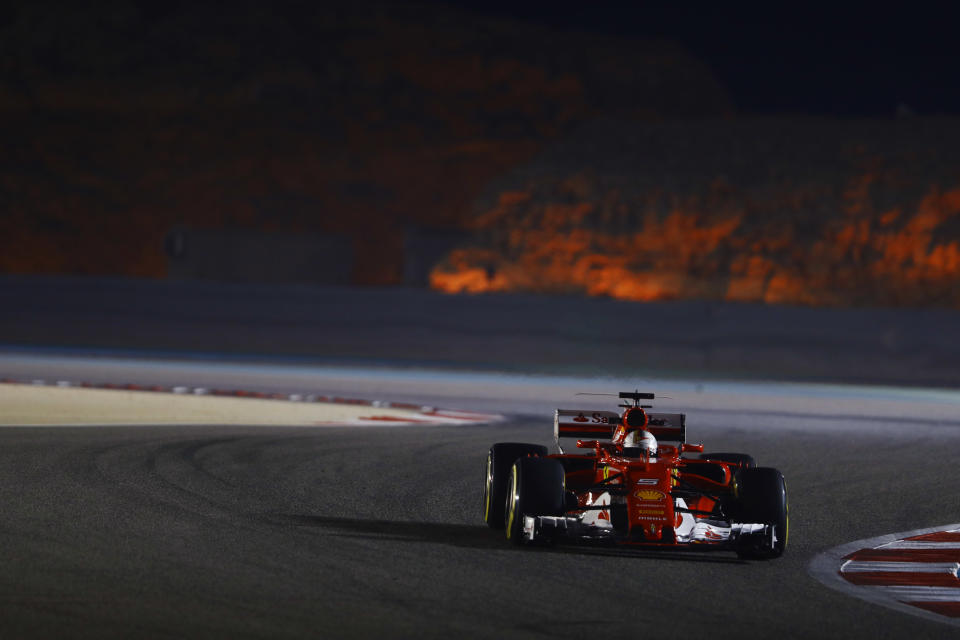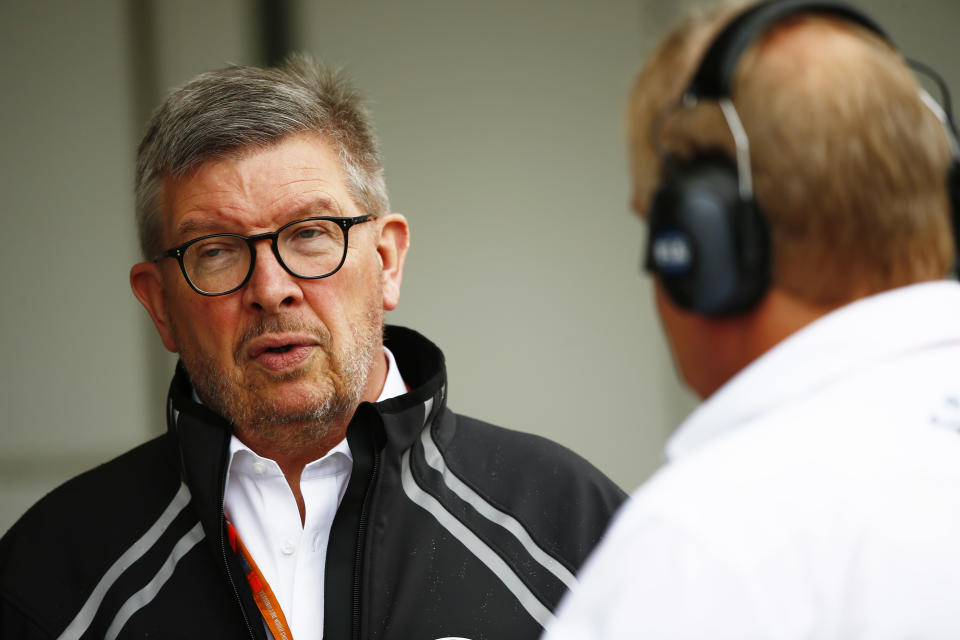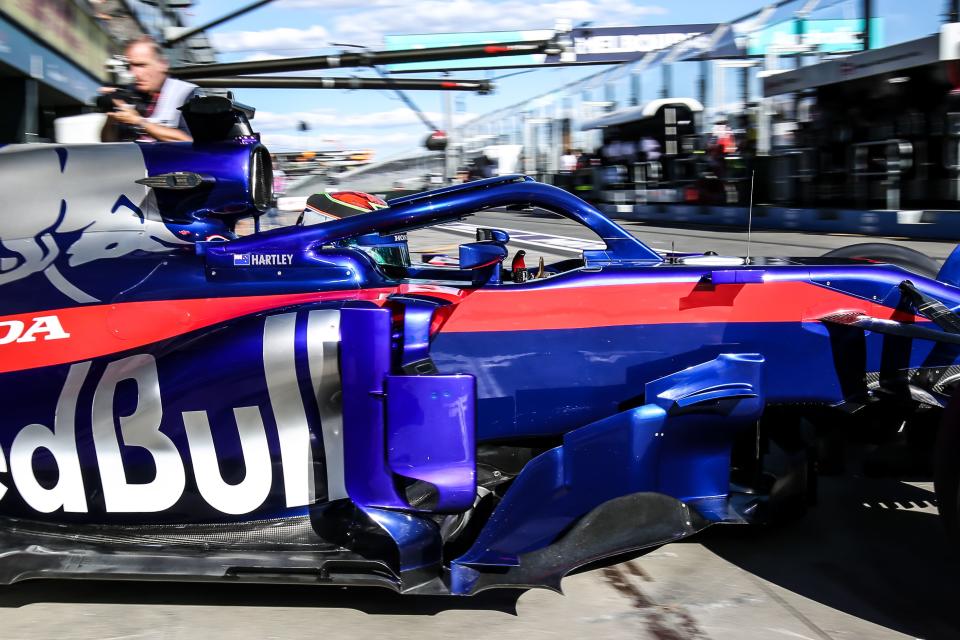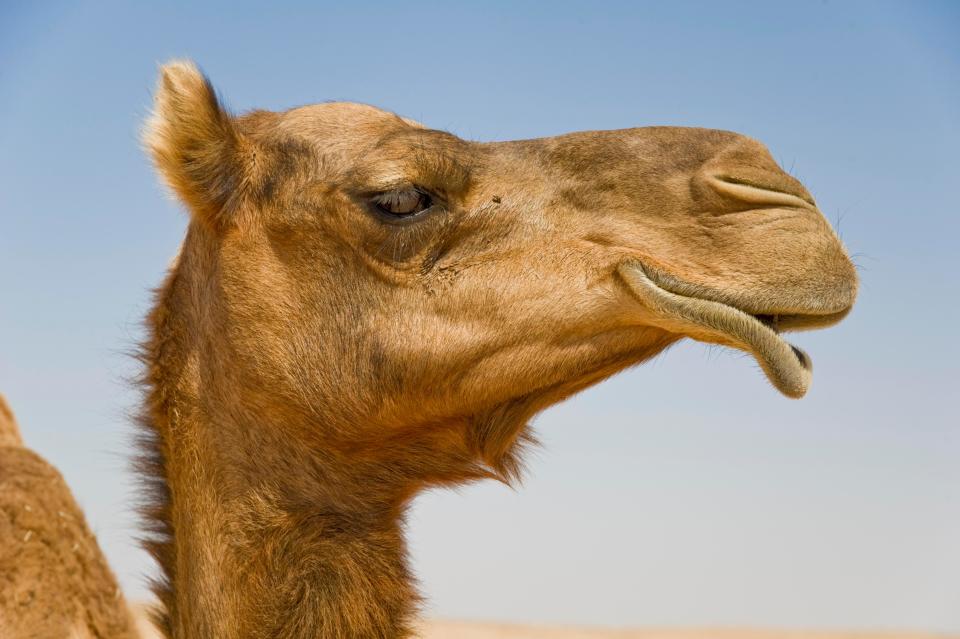Bahrain Grand Prix: A little night entertainment at F1's prettiest camel farm

If Silverstone is the most iconic F1 airfield circuit and Monaco the most memorable street circuit, the prize for prettiest camel farm circuit belongs to Bahrain.
It’s not the most glowing of endorsements, I grant you, but, as night falls on the Bahrain race, it’s pretty clear the track designers managed to fashion a silk purse out of a camel’s ear.
Of course, it helps to be watching the sun set over the surrounding desert as the floodlights clock on, but F1’s first night race of 2018 remains a visual treat, whatever happens on track. And, yes, it is built on the site of a former camel farm, in Sakhir.
Coming up, the race. But first, the F1 news

In many ways, this weekend’s Bahrain Grand Prix could and, indeed, should be overshadowed by some major announcements from F1 owners Liberty Media over the sport’s future.
On Friday, Liberty (in the shape of F1 colossus Ross Brawn) will reveal the changes they hope to implement from 2021, the first season after the current Concorde Agreement between F1’s rulers, owners and teams ends.
It’s anticipated that power units will be simplified – expect V6 turbo hybrids but without the MGU-H element, which converts heat into electricity.
It’s also believed Liberty will want to standardise more parts on the cars, to narrow the performance gap between teams and control costs – at the risk of being seen to move towards a ‘spec’ racing series.
But there will be some surprises in there too, and plenty of controversy.
How will F1 divide up the money between teams? Will Ferrari continue to get a wad just for turning up, while the minnows scratch around trying to find a few quid for the bus home?
Who’ll win and lose in terms of F1’s labyrinthine political machinations?
Most importantly, will F1 be rendered fit for purpose in our rapidly changing world, or left behind as a significant but irrelevant sideshow?
For it is irrelevance that poses the greatest threat to this sport. The automotive world is going through its most significant changes since the era of Henry Ford, and F1 is not immune.
The way we consume sport is going through a similarly significant evolution – not just the squeeze on free-to-air coverage, but the whole digital revolution that continues to offer up new ways of consuming F1 … and its competitors.
And F1, even (or especially) for its die-hard fans, has some fairly basic problems with the ‘raceability’ of the cars. The huge reliance on aerodynamic grip, coupled with the associated problems of driving in the turbulent air of cars in front, has neutered competition too often.
So, let’s see what rabbits Liberty can pull from their racing helmets – and let’s see how F1’s moody power brokers respond.
The heat is on. Possibly

Deserts, as you know, can be pretty hot in the sun but the temperature heads south when night falls.
It’s perhaps appropriate, then, that the Bahrain Grand Prix has blown hot and cold over the years.
The desert heat is now less of an issue than it was back in 2005, when the race still took place in daylight and the mercury passed 41C… and that was outside the cockpit.
A lack of action has led to some fans labelling it ‘Borehrain’ yet, at the same time, the circuit has thrown up more than a few memorable moments.
Think back to Lewis Hamilton and Nico Rosberg duking it out in that epic 2014 race, or Mark Webber weaving like a rug maker on morphine as he fought off Fernando Alonso back in 2004. Two years later, Nando was going wheel-to-wheel again in Bahrain, this time with Michael Schumacher.
In 2006, one Nico Rosberg made his F1 debut in Bahrain. He got as far as the first corner before spinning and damaging his car. One pitstop later, he began a memorable charge back through the field to seventh place, and a star was born.
Having said that, Kimi Raikkonen managed to outshine even Rosberg’s achievement, thrashing his McLaren from 22nd up to third. Those were the days.
For something brutally spectacular, check out Pastor Maldonado flipping Esteban Gutierrez out of the 2014 race. Even by Maldonado’s heroically patchy standards, that was a tad clumsy.
So ignore the naysayers with their calls of ‘Borehrain’ – enjoy the sight of F1 under floodlights, and keep your paws crossed for one of those classic races to develop.
Grab the gaffer tape

It’s only race two of a 21-race season, but already F1’s well-intentioned but ill-conceived engine restrictions are draining some teams of the will to live.
Each car has only three sets of power units (the engine, the turbo and other key elements) to last the year, before penalties are handed out. So spare a sigh for Toro Rosso, wrestling manfully with new Honda power.
Pierre Gasly will be on his second internal combustion engine (ICE), his second turbo and his second MGU-H component, after his engine let go in Australia.
As the failure was blamed on a problem with the turbo and MGU-H, Gasly’s team-mate Brendon Hartley will also start with updated versions of those components – which means fewer engine parts remain for him too.
In pre-season testing, it looked like Honda had finally got a grip on their reliability problems but here we are, just one race into the year, and the gremlins already have the upper hand. It could be a very long season for Toro Rosso and their Honda helpers…
Anything else?

The second DRS zone has been extended for the Bahrain GP, in an attempt to increase the number (if not quality) of overtakes.
Whether it works or not, at least we should see a bit more overtaking than the F1 procession that took place in Albert Park a couple of weeks ago, as Bahrain is much more overtake-friendly than the Melbourne street circuit.
In particular, turns 1-4 offer plenty of opportunities for wheel-to-wheel action, to keep the crowd happy.
That crowd, by the way, may be difficult to spot in some places, and not just because it’s dark.
Organisers are hoping for a record turnout but that record is a rather modest 33,000 people – about what you’d get at a Leeds or Leicester footie game.
Still, that’s a pretty big crowd for a former camel farm.

 Yahoo Sport
Yahoo Sport 






































